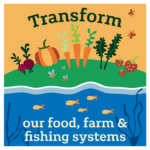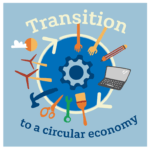Blog by Andrew Midgley, Senior Land Use Policy Officer, RSPB Scotland
Nature really matters. Over the last few months of the Covid pandemic many of us have explored our local area and come to really appreciate the value of nature in our lives. Increasingly we are recognising how important nature is to our physical and mental wellbeing and this growing understanding of the benefits of nature is fantastic. But nature can also play a vital role in our response to climate change. By protecting and enhancing our land and seas we can tackle both the biodiversity and the climate crisis at the same time. We now need the Scottish Government to invest in and drive forward this agenda and make it a central part of our economic recovery.
But what do I mean by saying that nature has a role to play in our response to climate change? Well, I’m thinking of things like planting trees, restoring damaged peat bogs and improving the condition of natural habitats like saltmarshes or seabeds.
Let’s take a couple of those examples. Peatlands cover 20% of Scotland and healthy peatlands can play a vital role in carbon storage and in maintaining Scotland’s water quality and biodiversity. If we look after them, peatlands will store carbon and support a range of wildlife that likes to live and breed in this landscape. Unfortunately, much of our peatland is in poor condition and damaged peatlands actually release greenhouse gases rather than store them. So if we restore peatlands to a healthy state, we will be working to address both the climate and biodiversity crises.
Similarly, trees remove carbon from the atmosphere and woodlands that remain in place for a long time keep that carbon stored. This is important because we are collectively aiming to achieve a target of ‘net zero’ emissions by 2045. Reaching ‘net zero’ will require big reductions in emissions from activities like transport, industry and farming and big increases in the removal of carbon from the atmosphere from activities like woodland creation and peatland restoration. Hence ‘nature’ having a big role to play.
Fortunately, the Scottish Government recognises the important role that nature can play. With regard to peatlands, there was some good news recently when it announced that the government would earmark £250 million to peatland restoration over the next 10 years. This is a good start.
But while this recent commitment is very welcome, greater investment and action is needed. I know that sounds like ‘please sir, can we have some more’, but at current costs, £250 million will pay for restoration of approximately 250,000 hectares of peatland while the government itself claims that there is approximately 600,000 hectares of degraded peatland in Scotland (which is arguably a very large underestimate). Clearly, we still have a long way to go and we need to be aiming at restoring all our peatlands and stopping the practices that lead to the degradation in the first place.
On tree planting, the Scottish Government is also keen to see expansion and is aiming for 15,000 hectares of woodland creation per year by 2025. At the moment the government appears to be especially keen on expanding the commercial forestry industry, but we would also want to see a large share of any new woodland creation being native woodland, which arguably locks in carbon for longer and delivers much better co-benefits for biodiversity. While we do need to see woodland expansion, it will be important to make sure that new woodland creation does not damage existing high nature value habitats. A more coordinated and strategic approach to land use in the context of climate change is clearly needed.
The message is clear; helping nature can help tackle climate change. The Scottish Government recognises this but could do so much more to really grasp the opportunities. Greater investment and ambition for what nature can deliver would make a massive contribution to the national response to climate change and tackle the biodiversity crisis at the same time. This would be a way of investing in our more remote rural areas and supporting our land managers and communities at a time when they need it most. Investing in nature would be one important strand of a green recovery. We just need to make sure we maximise the benefits of activities like tree planting and peatland restoration and minimise the unintended consequences.
It can be done if all stakeholders pull in the same direction and the government ramps up its commitment. Let’s get on with it. The climate will benefit, nature will benefit, we will benefit. It’s a no-brainer!



